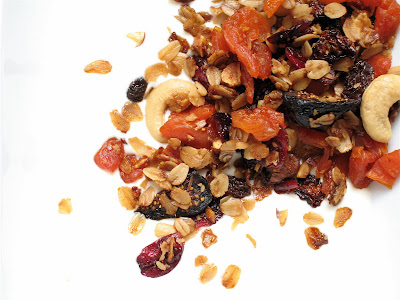My parents have the slowest internet connection ever. EVER.
It took seven-and-a-half minutes for this "create post" page to load, and a third of the pictures are still just little question marks.
It's making me feel like the state of my posting is very, very tenous, and I might lose it all at any moment, so I apologize for the brevity, lack of wit and proof-reading. But there's a very important reason for me to post today: because not only is today about suffering through a terrifyingly slow internet connection, it is ALSO about getting excited for french onion soup. YEAH!
My mom has bought the most amazing onion: it's about half the size of my head, really, and I promise you it's the sweetest thing to ever be called "onion." I'd take a picture, even a crappy picture of it, just for you to wonder at it, but really, that would take 45 minutes to load. (I'm not exaggerating at all. My mom is always trying to send pictures she sent with her digital camera, and it's a full afternoon of work for her to email me three photos.)
Anyway, we eat The Meyer Family French Onion Soup every Christmas Eve; rumor has it that my grandmother, the absolute toughest four-foot-eleven German woman you could ever imagine, wooed it off a famous french chef in the 50s.
So take note and yum yum:
Meyer Family French Onion Soup
Ingredients:
1 enormous sweet yellow onion, about half the size of your head, or 4 large sweet yellow onions, very thinly sliced
1 stick of butter
3-4 cups broth (I have an affinity for Better Than Boullion's organic vegetarian "no-chicken" chicken broth. But really, if you eat beef or chicken, I don't see any reason why you shouldn't substitute a rich meat broth. I'm not that judgmental kind of vegetarian.)
1 cup dry white wine
Black pepper, to taste
4 thick slices of french baguette
1 cup shredded gruyere or emmanthaler
special equipment: 4 oven-proof soup bowls
In a medium, heavy-bottomed skillet (I prefer stainless steel, as some of the onion will stick a little bit and add a rich, carmelized goodness to the soup), melt butter over medium-low heat until foam subsides. Add onion and cook, stirring occasionally, until it is golden, melty and has become one with the butter, about 35-45 minutes. Really, it's about patience, just letting the onion take its sweet time to bring out all that onion's sweet and creamy goodness. It's not too high-maintenance, though; you don't need to be stirring it all that often.
Raise the heat to medium and add the wine; let it simmer off for a bit, degalzing any of little onion crusties that might be stuck to the pan. Add the 3 cups of broth and continue to simmer until all tastes sweet and good, about 20 more minutes; if the soup looks to thick, add more broth. You'll know your soup is ready when your onions become mere ethereal whispers, and broth, onions and butter are virtually indistinguishable from one another in flavor. Oh bless those onions onion-y hearts for becoming a thing so miraculous!
About ten minutes before the soup is finished, lightly butter both sides of the baguette slices and toast each side in a skillet over medium heat until lightly browned; set aside.
Preheat broiler. When the soup is finished, add a very generous grinding of fresh ground pepper (depending on the saltiness of your broth, you may need to add some salt). Arrange four oven-proof bowls on a sturdy cookie sheet, and ladle soup into bowls. Top each bowl with a crouton and an extremely generous handful of cheese. Slide the tray under the broiler and broil until the cheese is brown and bubbling, about 2 minutes, but be sure to keep you eye on it while it's in there.
Serve, with a toast to grandma!

